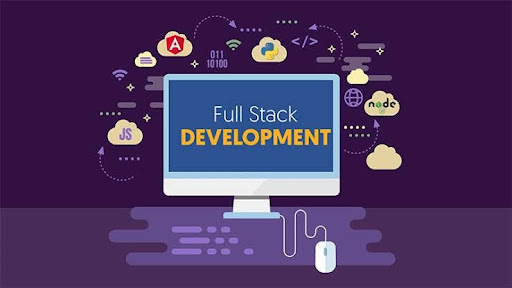In the rapidly evolving tech industry, full-stack development has emerged as a cornerstone, blending the art of front-end aesthetics with the complex functionality of back-end processing. Full-stack developers are highly sought-after professionals who have the unique ability to design, develop, and manage all aspects of a web application. This article delves into what full stack development involves, the tools and technologies used, its advantages, and why it remains a pivotal role in today’s digital economy.
What is Full Stack Development?
Full stack development refers to the practice of developing both the front-end (client-side) and back-end (server-side) portions of web applications. This dual capability enables developers to build comprehensive solutions from start to finish, providing a seamless user experience while ensuring robust server performance and database management.
Front-End Development:
The front end is the part of the web that users interact with. It involves everything seen on the screen, from buttons and images to sliders and text. Core technologies used in front-end development include HTML, CSS, and JavaScript. HTML structures the content on the page, CSS styles it and JavaScript makes it interactive. In addition to these core technologies, developers often use frameworks such as React.js, Angular, or Vue.js to streamline and enhance the development process.
Back-End Development:
The back-end is where the data processing happens and is not visible to the end user. It includes servers, applications, and databases. Back-end developers use programming languages such as Python, Ruby, Java, and Node.js (JavaScript) to create the logic that runs the web applications. They manage APIs, control data exchange, and ensure that everything on the client side works by interacting smoothly with the server side.
Tools and Technologies
Full stack development requires a diverse set of tools to address both client and server-side requirements. Developers use version control systems like Git to manage changes to the codebase, allowing multiple developers to work on the same project without conflicts. For database management, SQL-based systems like MySQL or PostgreSQL are popular, alongside NoSQL databases such as MongoDB, which are chosen based on the project’s requirements.
Deployment technologies such as Docker and Kubernetes have also become essential, helping developers deploy applications in a consistent environment irrespective of the local machine setup. These tools also facilitate the scaling and management of containerized applications across clusters.
Benefits of Being a Full-Stack Developer
Versatility: Full-stack developers are versatile professionals who understand both client and server software, making them invaluable in any development team. They can make informed decisions that encompass the entire system architecture and handle projects with a holistic approach.
Increased Employment Opportunities: As digital transformations accelerate, the demand for full-stack developers continues to rise. Companies value the versatility and comprehensive understanding these professionals bring, often leading to lucrative and diverse career opportunities.
Continuous Learning and Adaptability: Full-stack developers continuously learn new programming languages, tools, and technologies. This constant learning curve keeps their skills relevant and adaptable to new challenges, fostering both personal growth and professional advancement.
Conclusion
Full stack development is more than just a job title; it’s a crucial skill set in the modern digital landscape. It empowers developers to handle multiple aspects of software development, ensuring they can oversee projects from conceptualization to deployment. As businesses continue to emphasize digital presence and integrated technologies, full-stack developers will remain pivotal to the tech industry, making it an attractive career path for aspiring developers.
